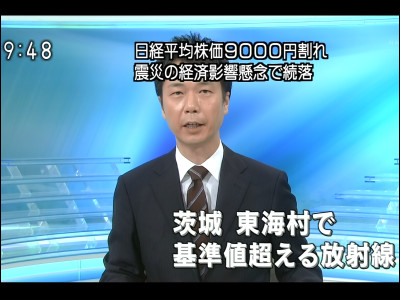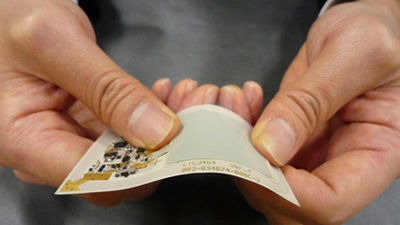Camera which makes invisible radioactive material visible "Super wide angle Compton camera" Example image

The Japan Aerospace Exploration Agency (JAXA) has developed a new device "Super Wide Angle Compton Camera" that visualizes the distribution of radioactive materials emitting gamma rays, and has developed a distribution of radioactive cesium with a much wider view than the conventional gamma camera I heard that accuracy imaging has succeeded.
JAXA | Verification test for visualization of radioactive materials by "super wide angle Compton camera"
http://www.jaxa.jp/press/2012/03/20120329_compton_j.html
This camera is based on the technology of the gamma ray observation sensor to be mounted on the next X-ray astronomy satellite ASTRO-H, has the ability to discriminate gamma rays unique to nuclides and wide field of view (nearly 180 degrees), and it is installed in the premises and houses It is possible to image about widely distributed Cesium 137 (Cs - 137) and Cesium 134 (Cs - 134). As a result, it became possible to image radioactive materials accumulating in high places such as roofs, which was difficult with conventional surveys.
The following picture shows the real part of 2 units that make up the super wide angle Compton camera

The real super wide angle Compton camera

Imaging test results with ultra wide angle Compton camera conducted at the Institute of Space and Astronautical Science Laboratories of the University of Tsukuba The three types of radioactive calibration sources (barium 133 (Ba - 133), cesium 137 (Cs - 137), sodium 22 (Na - 22) I placed the image on the following image. Gamma rays radiated from each nuclide are analyzed by setting separate energy windows, simultaneous imaging of the distribution of each nuclide and utilization of the ability to separate nuclides by energy to make barium 133 green, cesium 137 Is shown in red, and sodium 22 in blue.

The following devices carry out radiation measurement in the environment by walking with "gamma plotter H", a stick with a plastic scintillator detector set at the position of 5 cm and 100 cm on the ground, and the satellite positioning system (GPS), radiation dose rate is plotted on the map and radiation dose rate map can be easily created.

The following is an actual example.
◆ Example 1: Super behind near Iidanomura public hall
Imaging results with a super wide angle Compton camera (60 minutes integrated image, 2 persons to be measured)

Measurement results with the gamma plotter H (measurement number 78 points, required time 21 minutes (including movement etc), 2 persons to be measured)

Change in imaging time

◆ Example 2: Super front in the vicinity of Iitate Village Community Center
Imaging results with a super wide angle Compton camera (60 minutes integrated image, 2 persons to be measured)

Measurement results with the gamma plotter H (measurement number 78 points, required time 21 minutes (including movement etc), 2 persons to be measured)

Change in imaging time

◆ Example 3: Iitate village Kusano Kotetsu shrine Near mountain forest
Imaging results with a super wide angle Compton camera (60 minutes integrated image, 2 persons to be measured)

Measurement results with gamma plotter H (measurement number 216 points, required time 65 minutes (including movement etc.), 2 persons to be measured)

Change in imaging time

According to JAXA, in the future it will be possible to proceed with "decontamination" in Fukushima prefecture to eliminate contamination by radioactive material by making full use of this technology.
Related Posts:
in Science, Posted by darkhorse







